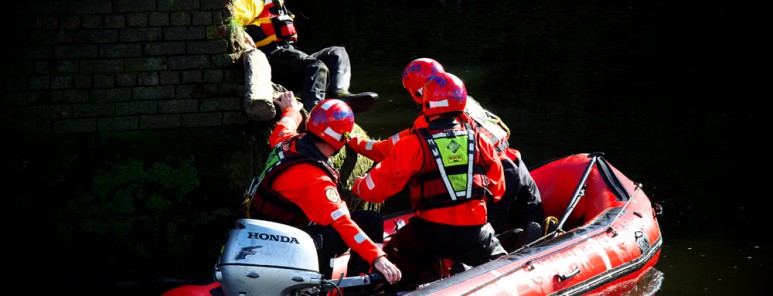South Yorkshire’s fire service is asking people to stay out of water this summer, unless they are part of an organised open water swimming group.
The message comes as part of a national week of action, run from Monday 26 April to Monday 3 May by the National Fire Chief’s Council, in which fire services across the country are urging people to stay safe near water.
Firefighters hope that by joining forces, and gaining support of partners such as the Royal Life Saving Society UK (RLSS UK), they can reduce the 144 water rescues and incidents they attended last year.
This push also comes less than a year after the family of local teenager, Taylor Matthews, shared their tragic story in hope of saving other young lives.
Taylor, also known as Tay, drowned in Doncaster’s Skelbrooke Quarry in July 2018. He was out with friends when he jumped in from a bank around 30 feet high.
As soon as he entered the water, he suffered from cold water shock, which saw his body shut down. The inquest into his death ruled that he died from immersion.
“We’ve said it before and we’ll say it again, what happened to Taylor was a tragedy, and we want to make sure it doesn’t happen to anyone else,” said Watch Manager Craig Huxley, South Yorkshire Fire & Rescue’s (SYFR) lead for water safety.
“That’s why we’re supporting this week of action, and will be campaigning around water safety over the coming months as the weather warms up.
“Our message is simple – people should stay out of the water unless they are part of an open water swimming group, of which there are several in and around South Yorkshire.
“Unless you are part of one of these groups, you shouldn’t be going anywhere near open bodies of water such as quarries, lakes and reservoirs.
“To start with, lots of these places are privately owned, so people shouldn’t be going there anyway. Then, beyond that, there are a wide range of risks with jumping into open water.
“Firstly, the water is almost always colder than it looks. As was the case with Taylor, your body can temporarily shut down from cold water shock which can stop even strong swimmers.
“Secondly, you don’t know what’s under the surface. There could be anything such as trollies, broken glass or plastic and reeds that can trap you.
“Finally, there are often hidden currents in bodies of water that can overpower even the strongest of swimmers. It’s just not worth the risk.”
In the run up to the week of action, officers from SYFR have developed a range of water safety videos that have been sent into primary and secondary schools across the county.
The service has also joined up with the RLSS UK to develop a range of education and safety materials, including the development of a dedicated water safety website – www.syfrwater.co.uk.
This website features a range of information on how to keep you, your friends and your family safe, and also features interactive games for children.
Lee Heard, Charity Director for the Royal Life Saving Society UK, said:
“We know how tempting it is to jump in to cool off on a hot day, but the difference between the air temperature and the water temperature will literally take your breath away and dramatically reduce your ability to self-rescue.
“Swimming with a group at a recognised site is just one of many ways you can really have fun in the water, safe in the knowledge that the set-up is designed to look out for all of you.
“RLSS UK urge people to learn to enjoy water safely before they head out, ensuring everyone has a great day.”

